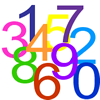Skip over navigation

Summing Consecutive Numbers
Shifting Times Tables
Charlie's Delightful Machine
Go Forth and Generalise


Or search by topic
Number and algebra
Geometry and measure
Probability and statistics
Working mathematically
Advanced mathematics
For younger learners
Patterns in Number Sequences

Patterns in Number Sequences
Mathematicians are often interested in exploring the structure of number sequences. In these problems, we invite you to explore and describe sequences, and explain the patterns you notice.
Summing Consecutive Numbers Age 11 to 14Challenge Level 


Age 11 to 14
Challenge Level 





15 = 7 + 8 and 10 = 1 + 2 + 3 + 4. Can you say which numbers can be expressed as the sum of two or more consecutive integers?
Shifting Times Tables Age 11 to 14Challenge Level 


Age 11 to 14
Challenge Level 





Can you find a way to identify times tables after they have been shifted up or down?
Charlie's Delightful Machine Age 11 to 16Challenge Level 


Age 11 to 16
Challenge Level 





Here is a machine with four coloured lights. Can you develop a strategy to work out the rules controlling each light?
Go Forth and Generalise Age 11 to 14
Age 11 to 14
Spotting patterns can be an important first step - explaining why it is appropriate to generalise is the next step, and often the most interesting and important.
You may also like
Reasoning Geometrically
These resources are designed to get you thinking about geometrical reasoning.
Reasoning with Numbers
These resources are designed to get you thinking about reasoning with numbers.

